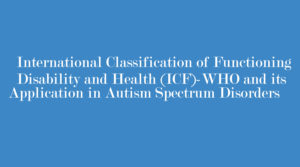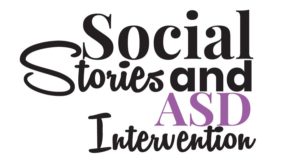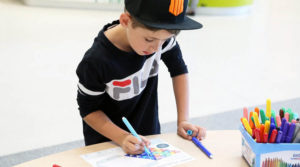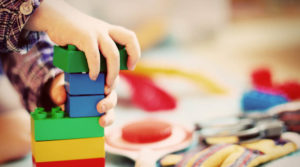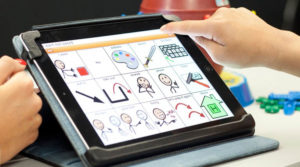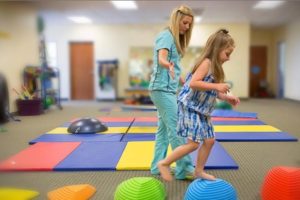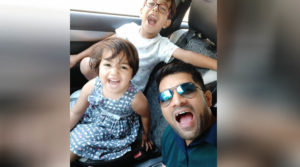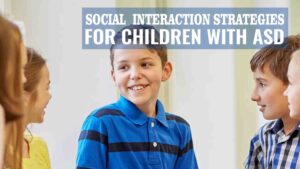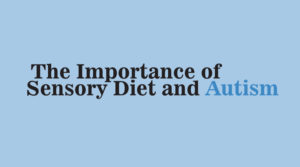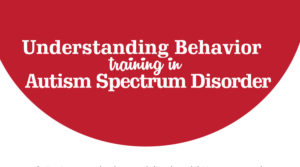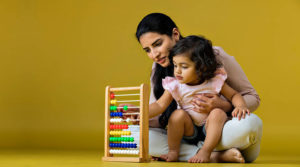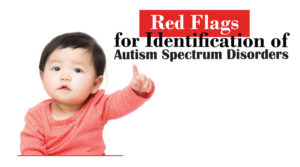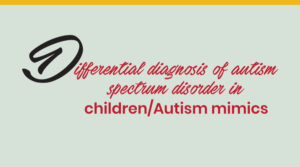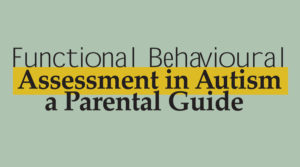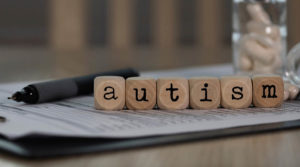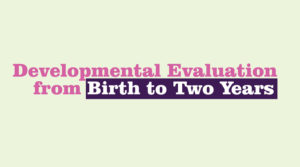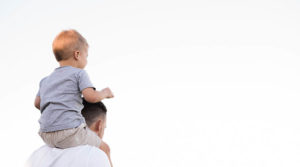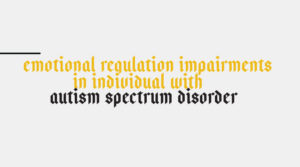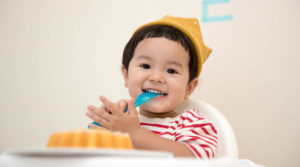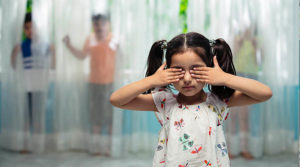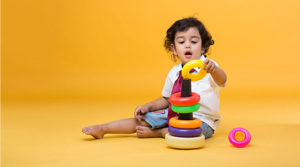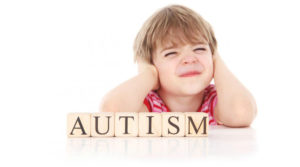Living with autism
By: Dr. Agyajit Singh
In our society, there exists a group of children who have not developed according to their normal growth and development. There are natural symptoms of a child developing motor abilities. But some children do not grow according to their age-level. This group of children are said to be the victim of a typical neurobiological development disorder. But some children instead of their normal growth and development, isolate themselves in a world of their own, have peculiar behaviour, have problems in communication and total lack of social and emotional development. Such children are often referred to as the children suffering from a specific developmental disorder named as autism.
Autism is a behavior disorder, characterized by impairment in social communication, social interaction, and social imagination. Those with autism often have a restricted range of interests and display repetitive behaviors and mannerisms, along with altered reactions to the everyday environment.Autism is a disorder of neural development characterized by impaired social interaction and communication, and by restricted and repetitive behavior. These signs all begin before a child is three years old. Autism affects information processing in the brain by altering how nerve cells and their synapses connect and organize; how this occurs is not well understood.
During the development of this disorder, the first year of life is usually marked with no clear discriminating features. Between two and three years of age, children show impairment in language development, especially comprehension; unusual language usage; poor response to name calling; deficient non-verbal communication; minimal recognition or responsiveness to other people’s happiness or distress; and limited variety of imaginative play or pretence, and especially social imagination.
During school age, children’s abnormalities in language development , their social withdrawal, inability to join in the play of other children, or inappropriate attempts at joint play often alert teachers and others to the possibility of an autistic type disorder. The manifestations of autism can also change with time during childhood, depending on other developmental impairments, personality, and the addition of medical or mental health problems.
Parents usually notice signs in the first two years of their child’s life. The signs usually develop gradually, but some autistic children first develop more normally and then regress. Early behavioral or cognitive intervention can help autistic children gain self-care, social, and communication skills. Although there is no known cure, there have been reported cases of children who recovered Not many children with autism live independently after reaching adulthood, though some become successful An autistic culture has developed, with some individuals seeking a cure and others believing autism should be accepted as a difference and not treated as a disorder.
Characteristics of Autism
Autism is a highly variable neuron-developmental disorder that first appears during infancy or childhood, and generally follows a steady course without remission. It is distinguished not by a single symptom, but by a characteristic of symptoms: like impairments in social interaction; impairments in communication; and restricted interests and repetitive behavior. Other aspects, such as atypical eating, are also common but are not essential for diagnosis.
1.Social development: – Social deficits distinguish autism and the related autism spectrum disorders from other developmental disorders. People with autism have social impairments and often lack the intuition about others that many people take for granted. Unusual social development becomes apparent early in childhood. Autistic infants show less attention to social stimuli, smile and look at others less often, and respond less to their own name. Autistic toddlers differ more strikingly from social norms.
2.Communication:-About a third to a half of individuals with autism do not develop enough natural speech to meet their daily communication needs.[31] Differences in communication may be present from the first year of life, and may include delayed onset of babbling, unusual gestures, diminished responsiveness, and vocal patterns that are not synchronized with the caregiver.
3.Repetitive behavior
- Autistic individuals display many forms of repetitive or restricted behavior; Stereotypy is repetitive movement, such as hand flapping, making sounds, head rolling, or body rocking.
- Compulsive behavior is intended and appears to follow rules, such as arranging objects in stacks or lines.
- Sameness is resistance to change; for example, insisting that the furniture not be moved or refusing to be interrupted.
- Ritualistic behavior involves an unvarying pattern of daily activities, such as an unchanging menu or a dressing ritual. This is closely associated with sameness and an independent validation has suggested combining the two factors.
- Restricted behavior is limited in focus, interest, or activity, such as preoccupation with a single television program, toy, or game.
- Self-injury includes movements that injure or can injure the person, such as eye poking, skin picking, hand biting, and head banging.[4] No single repetitive or self-injurious behavior seems to be specific to autism, but only autism appears to have an elevated pattern of occurrence and severity of these behaviors.
SYMPTOMS OF AUTISM
The hallmark feature of autism is impaired social interaction. As early as infancy, a baby with this disorder may be unresponsive to people or focus intently on one item to the exclusion of others for long periods of time. A child with autism may appear to develop normally and then withdraw and become indifferent to social engagement.
Children with autism may fail to respond to their names and often avoid eye contact with other people. They have difficulty interpreting what others are thinking or feeling because they can’t understand social cues, such as tone of voice or facial expressions, and don’t watch other people’s faces for clues about appropriate behavior. They lack empathy.
Many children with this disorder engage in repetitive movements such as rocking and twirling, or in self-abusive behavior such as biting or head-banging. They also tend to start speaking later than other children and may refer to themselves by name. Children with an autism don’t know how to play interactively with other children. Some speak in a sing-song voice about a narrow range of favorite topics, with little regard for the interests of the person to whom they are speaking.
Children with characteristics of an autism may have co-occurring conditions, including Fragile X syndrome (which causes mental retardation), tuberous sclerosis, epileptic seizures, Tourette syndrome, learning disabilities, and attention deficit disorder. About 20 to 30 percent of children with an autism may develop epilepsy by the time they reach adulthood.
CAUSES OF AUTISM
Scientists aren’t certain about what causes autism, but it’s likely that both genetics and environment play a role. Researchers have identified a number of genes associated with the disorder. Studies of children with autism have found irregularities in several regions of the brain. Other studies suggest that children with autism have abnormal levels of serotonin or other neurotransmitters in the brain. These abnormalities suggest that autism could result from the disruption of normal brain development early in fetal development caused by defects in genes that control brain growth and that regulate how brain cells communicate with each other, possibly due to the influence of environmental factors on gene function.
TREATMENT
For many children, symptoms improve with treatment and with age. Children whose language skills regress early in life—before the age of 3—appear to have a higher than normal risk of developing epilepsy or seizure-like brain activity. During adolescence, some children with autism may become depressed or experience behavioral problems, and their treatment may need some modification as they transition to adulthood. Children with autism usually continue to need services and supports as they get older, but many are able to work successfully and live independently or within a supportive environment.
There is no cure for autism. Therapies and behavioral interventions are designed to remedy specific symptoms and can bring about substantial improvement. The ideal treatment plan coordinates therapies and interventions that meet the specific needs of individual children. Most health care professionals agree that the earlier the intervention, the better.
Children recover occasionally, so that they lose their diagnosis of autism; this occurs sometimes after intensive treatment and sometimes not. It is not known how often recovery happens. Most autistic children can acquire language by age 5 or younger, though a few have developed communication skills in later years. Most children with autism lack social support, meaningful relationships, future employment opportunities or self-determination. Although core difficulties tend to persist, symptoms often become less severe with age. Few high-quality studies address long-term prognosis. Some adults show modest improvement in communication skills, but a few decline. Acquiring language before age six, having an IQ above 50, and having a marketable skill all predict better outcomes; independent living is unlikely with severe autism.


